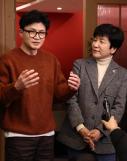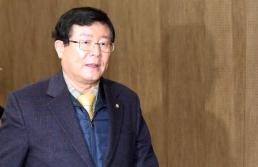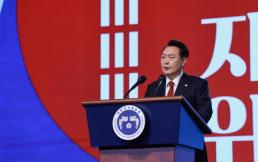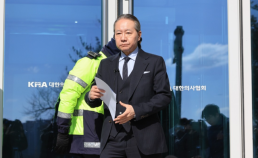Thanks to its people who work so hard with diligence and industry, South Korean economy could be named in the list of 10 largest economies in the world within a half century, despite the Japanese rule and Korean War. In this sense, ant-type talents are highly regarded as virtue not only in Korean society but also among Korean corporations.
But, a new wave of seeing talents in business is coming forward as the internet is evolving every day and internet-users collect information through a variety of networks and handle their work based not on a spontaneous plan but on a well-managed scheme.
In other words, businessmen start putting more value on so-called spider-type talents with attitude that information gathering is done through outsiders as well as insiders.
These talents find new information with accuracy in the virtual world through searching engines, blogs, and cyber networks like Tweeter. Sources of information range from alumni to foreign acquaintances that happen to know during the backpack traveling outside the country. They are a new generation with vibrant activities from the beginning of university days, making the most of information sources in and out of work. The method of acquiring information is quite different from one by baby boomers with limited ways to collect knowledge.
Those talents with spider-like quality in business await opportunity to extend their networks through the cyber activities as well as face-to-face relationships, just like a spider set a trap at the corner waiting for prey to swallow the bait. They learn how to acquire and utilize knowledge through their own information web connecting to a variety of sources.
Information sources cannot be restricted into the office for these talents, but they regard networking for fun and personal reasons as an extension of business.
And Ho-Am is thought to be one of these talents with emphasis on information gathering in advance to implementation of projects and a prior plan in accordance with corporate vision.
Most executives at his time placed a focus on micro-management skills in the field with sporadic interval, which included continuous pressure for subordinates to make the impossible possible.
However, Ho-Am showed a different style by keeping his pre-arranged plan no matter how tight the daily schedule was.
His business day in Korea usually started with a checking on the schedule and weather over a cup of coffee at preciously 5 to 9 o’clock in the morning in his office at the headquarters. And then, he ran through local and international newspapers in order to collect diverse information. His closing time was no later than 6 o’clock in the afternoon. Ho-Am even tried to keep his bedtime at 10 o’clock at night. Literally, he worked by the clock even in cases of urgency.
“Ho-Am had never done a business in a capricious manner depending on ups and downs in business environment,” said Woo-seok Choi, the former vice chairman of Samsung Economics Research Institute.
In terms of information gather, Ho-Am believed Tokyo to be an excellent place to map out his plans for new business, not only because it is an international city that is located closest to Korea, but also because the capital city of Japan is very sensitive even to small changes in the world economy. He started to make trips to Tokyo, ever since the end of 1959, when he had a chance to face the international affairs and get an idea for business through broadcasting in Japan.
During his stay in Tokyo, he watched a talk show on the TV, which discussed various issues on international politics, economy, military, society and culture with some of the most prominent figures in every walk of life.
Another way that he obtained information and invented some new ideas was to meet various people including Toshiba Chairman Doko Toshio. Ho-Am gained more information by listening carefully to others, and he completed his idea on business based on the information.
His human networks in Tokyo played a critical role in establishing the world’s best company Samsung Electronics.
For instance, after a meeting with Sanyo Electronics founder Toshio Iue, Ho-Am realized that electronics can be a higher value-added business than any other manufacturing industries and then decided to jump into the market for semiconductor, one of the most profitable businesses in electronics.
However, his efforts to collect information with accuracy and diversity did not stop in Japan. In 1980, he had business consultations with a Japanese economist regarding transitional trend in Japanese industries.
Then, in 1982, Ho-Am finally decided to get on a plane to America for the purpose of confirming the information he gathered in Japan. During a 3-week trip, he had an opportunity to see Japanese companies taking a lead in American markets for steel and automobiles while the Corporate America struggled with recession. In particular, Japanese makers were outstanding in increasing the market share by developing cutting-edge technologies.
“Suddenly, it dawned on me that the only way for South Korean economy to survive in the globe is to develop state-of-the-art technology as soon as possible,” Ho-Am wrote in his biography recalling the trip.
He also looked for advices home and abroad from a variety of renowned figures in semiconductor including Dr. Tadashi Sasaki, a founder of the modern-day Sharp Corporation.
His information sources were not just limited to experts in technologies and management, but Ho-Am took a lesson to keep the best quality in product even from a restaurant owner, who rejected customers with high reputation in business for being late and making it impossible for him to provide the best quality meal.
Ho-Am continued the management style to spot the best opportunity for business by gathering information through various channels including renowned figures home and abroad, general public with life wisdom, and books and media. It would not be an overstatement saying that such a style paved the first path for spider-type talents.
아주경제= 신기림 기자 kirimi99@ajnews.co.kr
(아주경제=ajnews.co.kr) 무단전재 배포금지
©'5개국어 글로벌 경제신문' 아주경제. 무단전재·재배포 금지

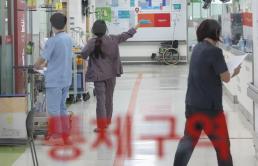
![[르포] 중력 6배에 짓눌려 기절 직전…전투기 조종사 비행환경 적응훈련(영상)](https://image.ajunews.com/content/image/2024/02/29/20240229181518601151_258_161.jpg)
